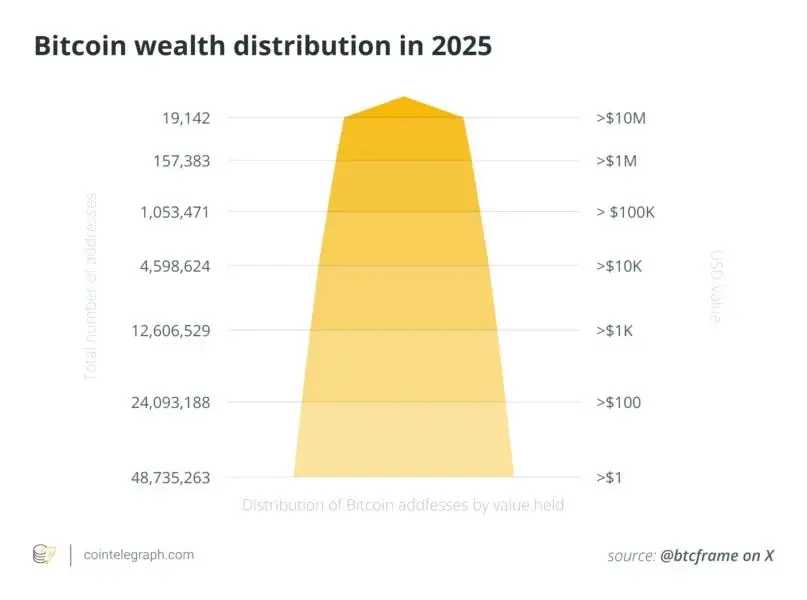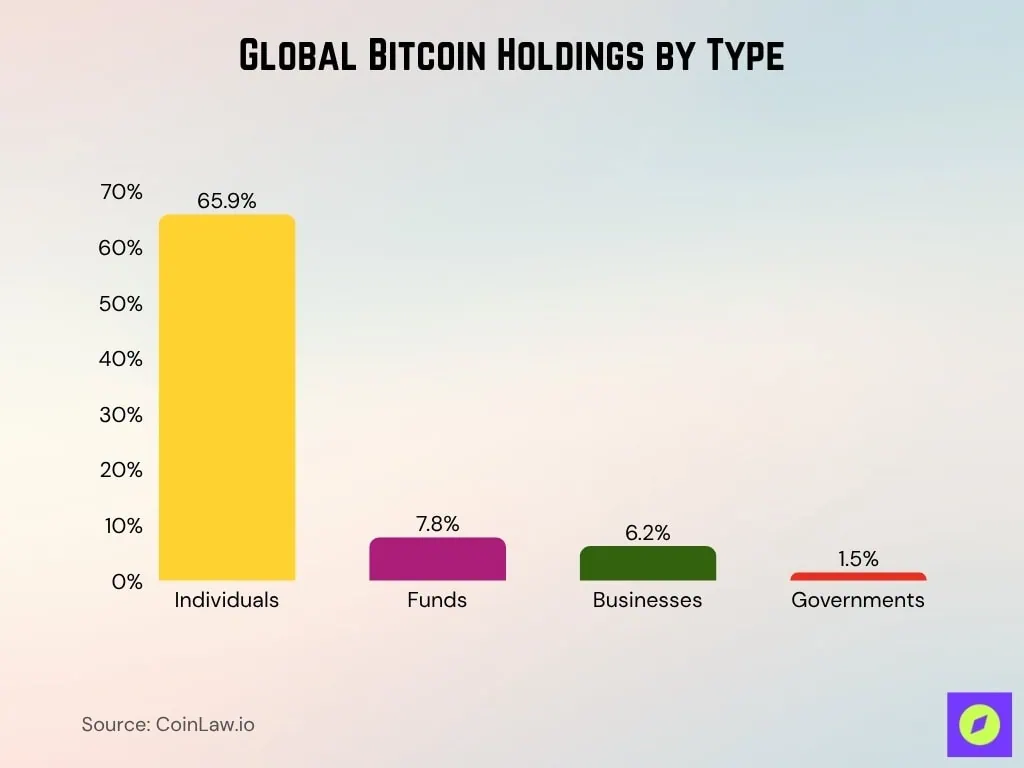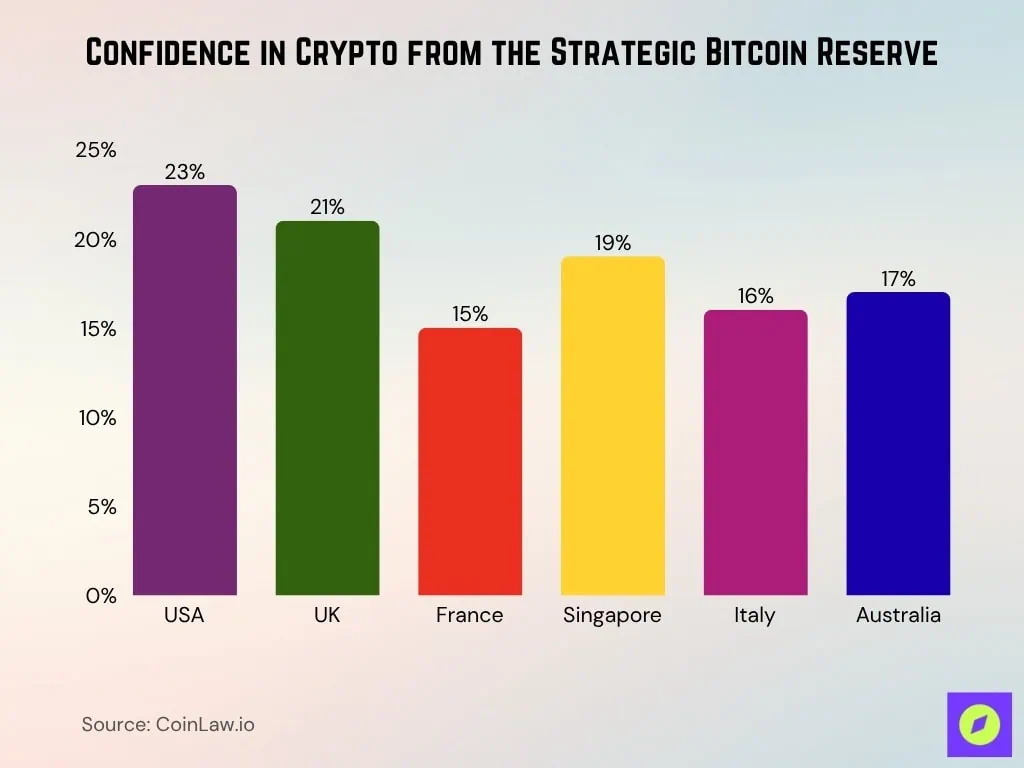The question of "the number of Bitcoin holders worldwide" lies at the intersection of finance, technology, and global adoption. It reveals both the extent of Bitcoin's penetration into the mainstream economy and its potential for future growth.
Companies are shifting their cash reserves into Bitcoin, while individuals in emerging markets are using it as an inflation hedge and cross-border remittance tool.
This article uses the latest Bitcoin holdings data, distribution patterns and core trends to deeply analyze the practical significance behind the numbers.
01 Recent Developments
In 2025, the surge in US spot Bitcoin ETFs and the influx of institutional funds significantly increased the transparency of holdings. Companies and funds continued to expand their balance sheets, driving the disclosure of fiscal-level holdings information.
Furthermore, clearer regulations in many countries have lowered the barrier to entry for investors and reshaped the distribution of holdings. Bitcoin ownership has increased in developed markets, with the UK seeing a rise from 18% to 24%.
However, the growth in ownership does not necessarily indicate widespread decentralization. On-chain data directly confirms the concentration of wealth, with whale addresses still dominating the market.
02 Bitcoin Wealth Distribution

1. The base of small and medium-sized investors is expanding: 24.1 million addresses have a balance of over $100.
2. Retail investor participation deepens: 12.6 million addresses hold over $1,000.
3. Growth of middle-class holders: 4.6 million addresses are worth over $10,000.
4. High-net-worth early investors gather: 1.05 million addresses exceed $100,000.
5. A high-net-worth Bitcoin circle has formed: 157,000 addresses have over $1 million.
6. The oligopoly remains: only 19,142 addresses hold more than 10 million US dollars in Bitcoin.
03 How many people own Bitcoin?
In 2025, approximately 106 million people worldwide will hold Bitcoin.
In the United States, 28% of adults (approximately 65 million people) hold crypto assets, of which 67% are men and 33% are women. The average age of owners is about 45 years old, with younger holders less dominant.
However, Bitcoin ownership remains low in many developing countries. For example, in Africa, the penetration rate is only 1.6%, with significant regional disparities.
Early technology enthusiasts still dominate, and people with high education and high income are more likely to hold positions.
The distribution data by holding entity type shows:
- Individuals hold approximately 65.9% of the Bitcoin supply
- Funds account for 7.8%
- Enterprises hold 6.2%
- The government holds 1.5%

04 Who owns the most Bitcoin
Private companies: 312,000 BTC (1.5% of supply)
Block.one: Exclusively holds 164,000 BTC (0.7%)
ETFs and related funds: holdings 1.358 million BTC (6%)
Governments: 463,000 BTC (2.3%)
Top 100 addresses: control the vast majority of supply.
The number of wallets holding at least $1 million worth of Bitcoin has surged, accelerating the institutionalization trend.
05 Bitcoin holdings by institutions and companies
Institutional holdings reached $414 billion in August 2025, driven primarily by ETF adoption and corporate treasury strategies.
- Corporate reserves surged 40% in the third quarter to $117 billion.
- The number of listed companies holding BTC has expanded to 172, with total holdings exceeding 1 million BTC.
- MicroStrategy leads corporate holdings with 640,000 bitcoins.
As of October 2025, US spot Bitcoin ETFs will manage $169.48 billion in assets (6.79% of market capitalization).
06 Strategic Bitcoin Reserve Confidence Index

- United States: 23% of non-holders said that strategic Bitcoin reserves increased their confidence in the value of the cryptocurrency.
- United Kingdom: 21% of respondents feel more confident due to the existence of protected areas.
- France: Only 15% of non-owners reported increased confidence, the lowest among the countries surveyed.
- Singapore: 19% of participants expressed higher trust in the stability of crypto.
- Italy: 16% of respondents said that strategic Bitcoin reserves increased their confidence.
- Australia: 17% of non-owners became more optimistic about the value of crypto following reserve initiatives.
06 Bitcoin on-chain activity
The total number of global crypto users exceeded 716 million in 2025, with an annual growth rate of 16%, and Bitcoin accounted for the largest share of active users on the Internet.
As of October 2025, Bitcoin processed 504,508 transactions in 24 hours, equivalent to more than 21,000 transactions per hour globally.
The average daily transaction volume across the entire blockchain reached $28.46 billion. Despite a trend toward address centralization, network liquidity remained stable. The average daily number of active addresses for the year was 945,752, with the 30-day average decreasing slightly to 928,141 (a decrease of 1.86%).
There are approximately 181 million monthly active addresses in the full crypto space, but the actual number of active users is only 40 million to 70 million, an increase of approximately 10 million from 2024.
About 700,000 to 1 million Bitcoin addresses are active every day, which is equivalent to about 300,000 to 500,000 independent users making on-chain transfers every day.
07 The number of sunken and dormant Bitcoins
As of August 2025, approximately 19.88 million bitcoins have been mined (approximately 94.8% of the 21 million upper limit); 2.3 million to 4 million BTC (11%-18% of the maximum supply) have been permanently lost.
Among them, from January to March 2025, about 62,800 bitcoins with a coin age of more than 7 years were used, a significant increase from 28,000 in the same period of 2024.
The continued accumulation of long-dormant wallets (tokens that have not been moved for several consecutive years) indicates a rising "dormant supply." Dormant whale addresses, which have not been moved since 2010, continue to attract attention because any unusual movement could cause market volatility.
A large number of mined bitcoins may never enter circulation, which will substantially change the effective supply structure.
08 Core Factors Driving Bitcoin Adoption
As many as 65% of millennials and Generation Z continue to prefer cryptocurrencies over traditional equity assets.
14% of non-holders plan to enter the market in 2025, and 67% of existing holders intend to increase their holdings.
India, the United States, Pakistan, the Philippines and Brazil are leading the global wave of crypto adoption, with US market activity surging by about 50% year-on-year.
By 2025, the usage rate of crypto payments will increase by about 45%, and half of small and medium-sized enterprises will accept Bitcoin or stablecoin payments.
Among Fortune 500 companies, 90% of executives called on the United States to improve encryption regulations, and 60% of companies are exploring the application of blockchain technology.
In addition, although 72% of investors hold higher education qualifications, 40% still have doubts about the security and practicality of cryptocurrencies.
09 The impact of the regulatory environment on holdings
By 2025, 64 jurisdictions around the world will have advanced digital asset legislation, and regulatory clarity will have increased by 43% year-on-year.
Institutional adoption rates in regulated markets like Singapore, Hong Kong, and the European Union are 2.3 times higher than in less regulated markets. The United States has issued four executive orders (including the March 2025 Strategic Bitcoin Reserve), driving a 35% increase in Bitcoin since the policy was enacted.
The GENIUS Act (July 2025) establishes the United States' first federal stablecoin framework, mandating 100% reserves and monthly audits.
The CLARITY Act clarifies the SEC and CFTC’s regulatory responsibilities for digital assets, ending a long-standing jurisdictional dispute.
The "New SEC Rules" (September 2025) shortened the ETF approval cycle from 270 days to 75 days, improving approval efficiency by 72%, stimulating an accelerated inflow of institutional funds.
As of August 2025, US crypto ETF assets under management reached $156 billion, with net inflows of $29.4 billion in the first eight months. There are 76 crypto ETP products listed in the US, a 12-fold increase compared to 2021 due to the relaxation of ETF regulations.
According to data from the Financial Stability Board, 58% of G20 member countries have fully implemented crypto regulation (only 22% in 2023). At the same time, the G20 Risk Report warns that inconsistent regulatory frameworks are posing a major global stability risk.
10 Future Outlook of Bitcoin Holdings Structure
By 2030, the total market value of Bitcoin may exceed 15 trillion US dollars, and the unit price is expected to reach the range of 829,000-999,000 US dollars.
Affected by the increase in holdings by institutions through compliant channels, the proportion of retail holdings may drop from 85% in 2024 to 60% in 2030. After the halving in 2028, 74% of the supply may be controlled by long-term holders who have held the coins for more than one year.
Experts' opinions
Ark Investment: Against the backdrop of continued influx of institutional funds, the target price of BTC in 2030 is US$710,000 in the baseline scenario, US$300,000 in the bear market scenario, and US$1.48 million in the bull market scenario.
Coinbase CEO: Driven by US regulatory policies and strategic Bitcoin reserves, Bitcoin could reach $1 million by 2030. Currently, institutional holdings account for approximately 8% of the supply, but with the expansion of ETFs and increased corporate holdings, this proportion is expected to exceed 20% by 2030.
Cathie Wood: With institutional endorsement and accelerated global integration, Bitcoin is expected to rise to $1.5 million in 2030.
VanEck: Under the premise of regulatory coordination and corporate adoption, the BTC price will stabilize at $300,000 in 2030.
AI model: Driven by DeFi and mobile wallets, the number of global Bitcoin users will exceed 100 million in 2027 and reach 250 million in 2030.
in conclusion
Although data shows a significant increase in the number of Bitcoin holders, it remains a niche asset globally.
The continued accumulation of lost and dormant tokens, the differences between Bitcoin holdings and broader crypto asset holdings, and the interplay of regulatory frameworks and structural factors all point to a complex but promising future.
With the continued influx of institutional funds and the expansion of individual participation channels, the next decade may reshape Bitcoin's distribution structure, application scenarios and market perception.







